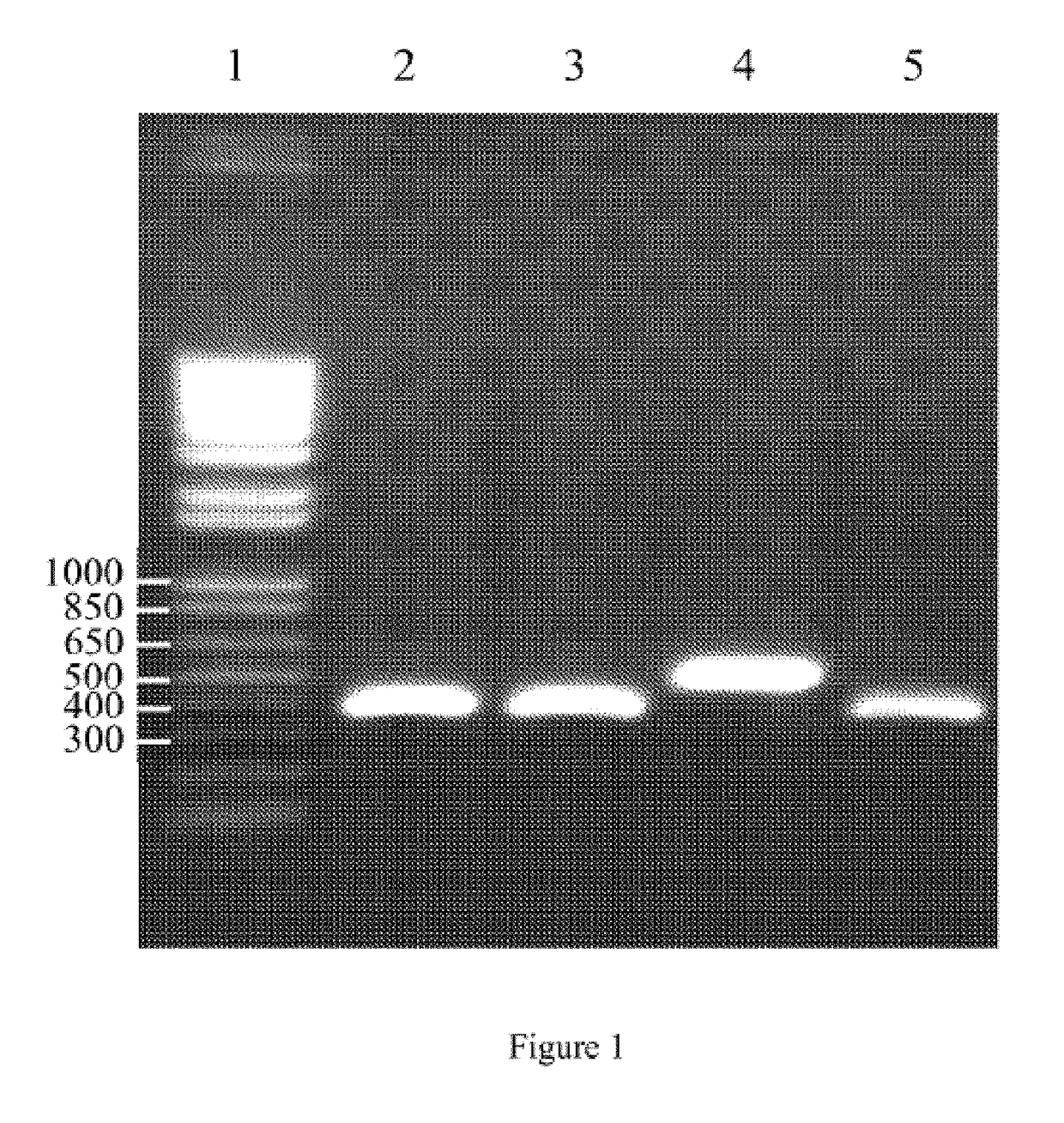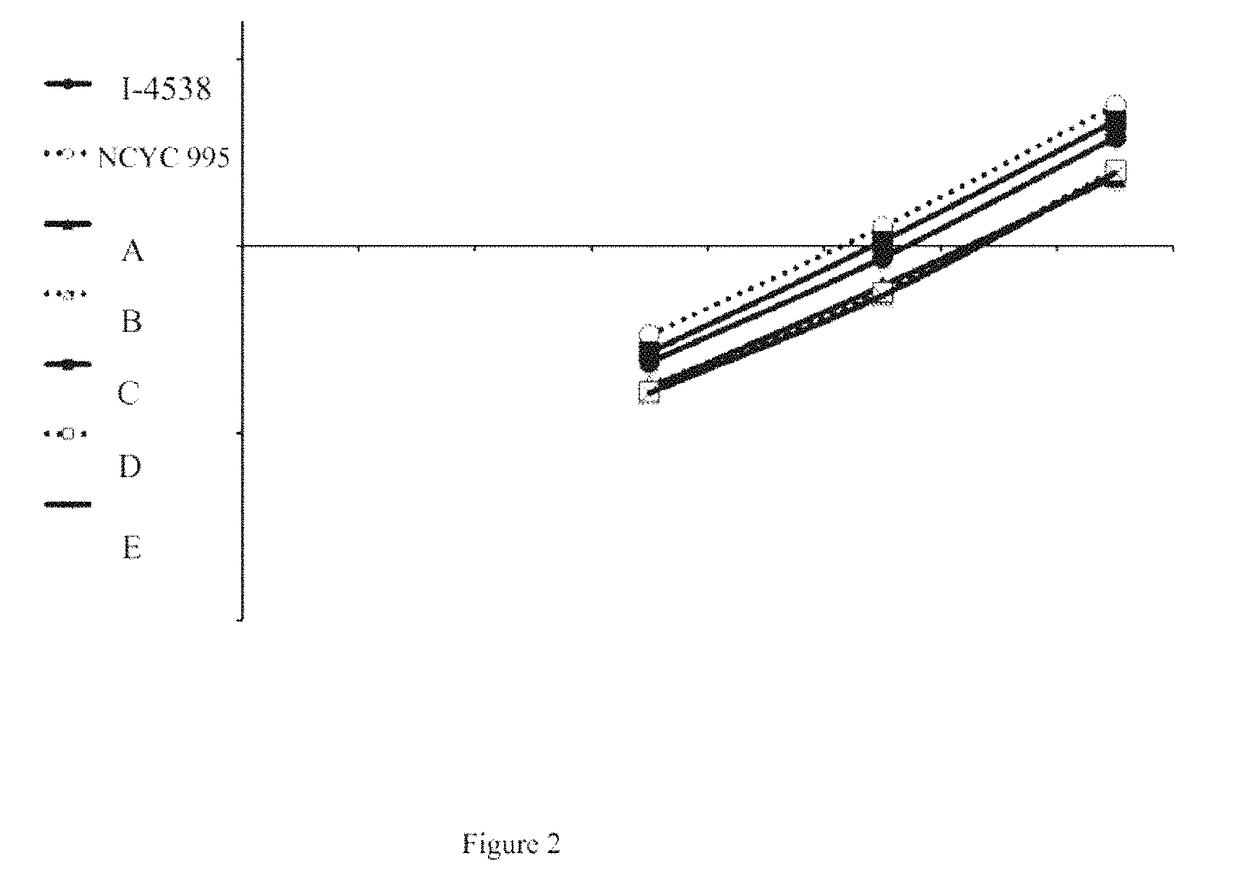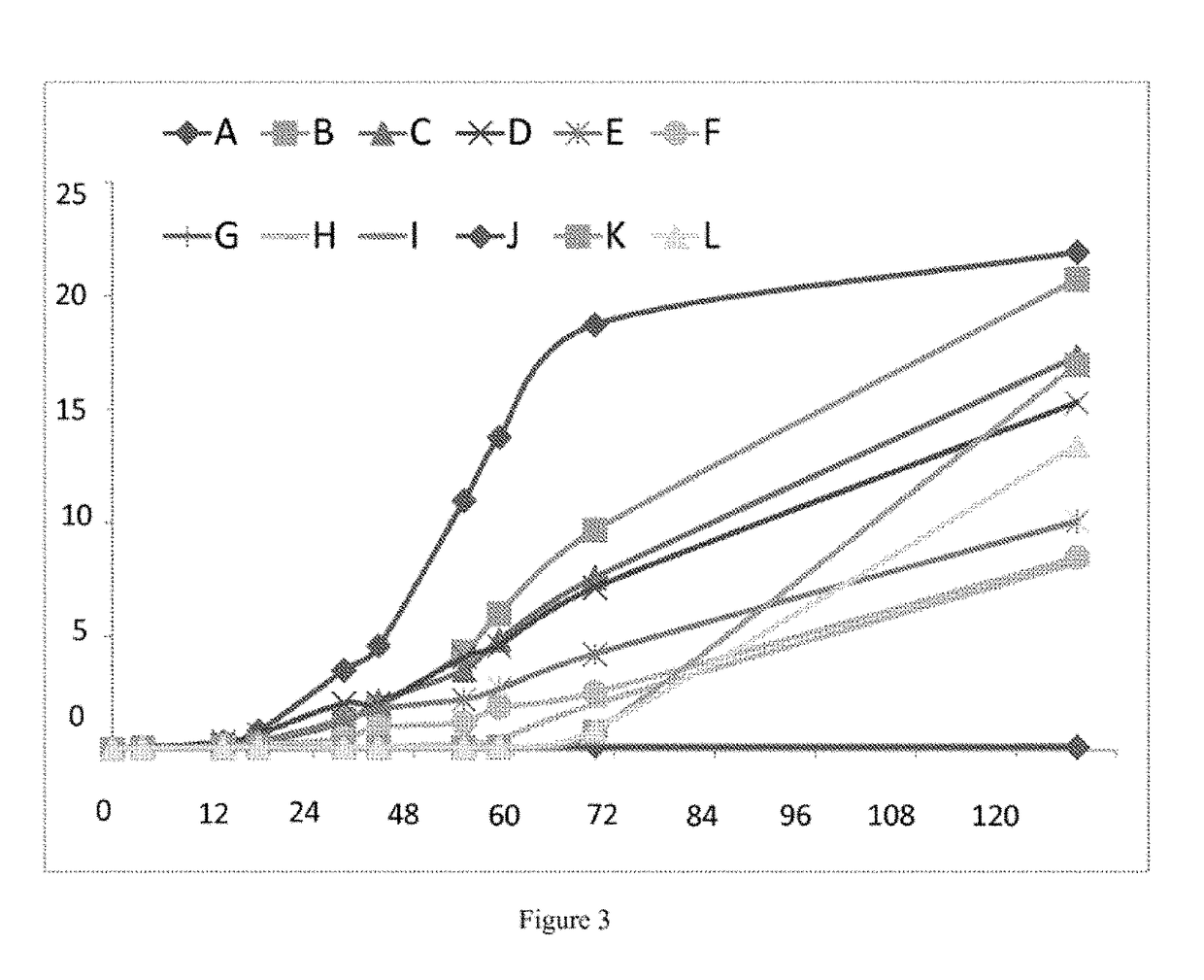Yeast strains for the production of biomass on a substrate comprising a C5 sugar
a technology of biomass and yeast, which is applied in the direction of biofuels, enzymology, transferases, etc., can solve the problems of c5 sugars, complex production and high cost, and endanger this type of production
- Summary
- Abstract
- Description
- Claims
- Application Information
AI Technical Summary
Benefits of technology
Problems solved by technology
Method used
Image
Examples
example 1
Preparation of Segregants X
[0102]In order to obtain segregants of the strain CNCM I-4538, the latter was cultured for 24 hours in YPG medium containing 10 g / kg of Yeast Extract (EXL) type J100, 10 g / kg of peptone and 20 g / kg of glucose. The suspension of cells that was obtained was then transferred to a Petri dish containing SAA medium consisting of 20 g / kg of agarose and of 7.5 g / kg of sodium acetate. After 5 days of incubation at 30° C., the tetrads are dissected using a micromanipulator. The dishes thus prepared are incubated for 48 hours at 30° C.
[0103]One of the limits to the use of the segregants obtained relates to their sexual signal. Indeed, at the time of the construction by molecular biology of the strains capable of fermenting xylose, some genes essential for this pathway were introduced in a locus that is genetically linked to Mat alpha. This point therefore implies that all the segregants originating from the strain deposited at the Collection Nationale des Cultures de...
example 2
Preparation of Segregants Y and Verification of the Capacity of the Segregants to Transmit a High Fermentative Power after Hybridization
[0106]Preparation of the segregant: the segregant deposited at the CNCM under No. I-4669 was prepared from the breadmaking strain deposited at the CNCM under No. I-2970. The preparation method used is identical to the one described in Example 1.
[0107]Verification of the transmission: hybrids 4539 and 4550 were prepared by hybridization of the segregants originating from the breadmaking strains deposited at the NCYC under No. 955 and at the CNCM under No. I-2970.
[0108]The fermentative powers on Normal Dough (ND) and Sweetened Dough at 2 g (SD 2 g) indicated in the following table show that the segregant I-4669 can transmit a high fermentative power after hybridization.
[0109]
TABLE 1StrainsI-2970NCYC-99545394550Power on ND161146187167Power on SD 2 g139117155148
example 3
Hybridization
[0110]The different segregants prepared were crossed as indicated in the following table:
[0111]
TABLE 2Crosses performedMat alphaX10S2X10S1CNCMCNCM No.X10S3No. I-4673I-4672PS27Ps28Mat aX10S4HC5-GHC5-HX10S5HC5-IHC5-JX10S6HC5-KHC5-LPS316HC5-AHC5-CHC5-BI-4669I-4671I-4670P3S8HC5-DHC5-FHC5-E
PUM
| Property | Measurement | Unit |
|---|---|---|
| OD | aaaaa | aaaaa |
| OD | aaaaa | aaaaa |
| OD | aaaaa | aaaaa |
Abstract
Description
Claims
Application Information
 Login to View More
Login to View More - R&D
- Intellectual Property
- Life Sciences
- Materials
- Tech Scout
- Unparalleled Data Quality
- Higher Quality Content
- 60% Fewer Hallucinations
Browse by: Latest US Patents, China's latest patents, Technical Efficacy Thesaurus, Application Domain, Technology Topic, Popular Technical Reports.
© 2025 PatSnap. All rights reserved.Legal|Privacy policy|Modern Slavery Act Transparency Statement|Sitemap|About US| Contact US: help@patsnap.com



